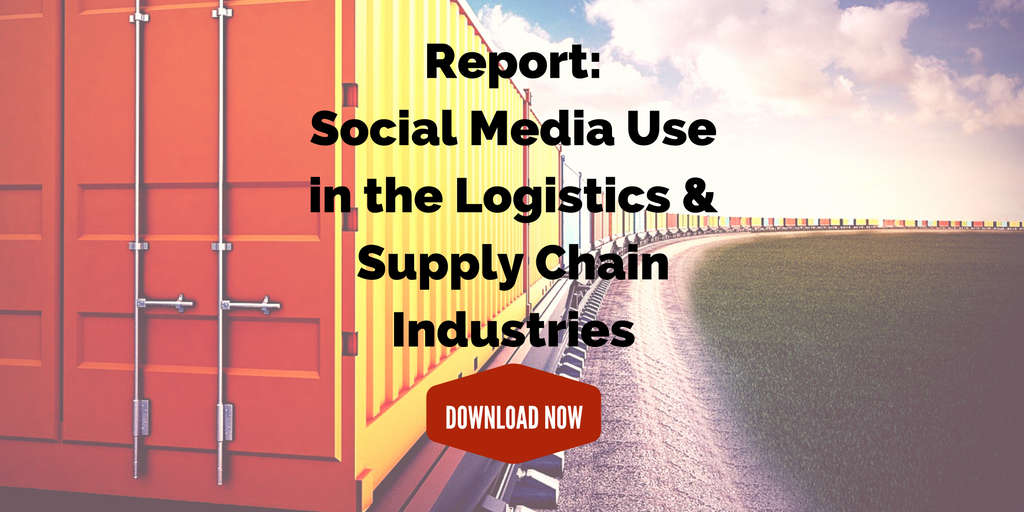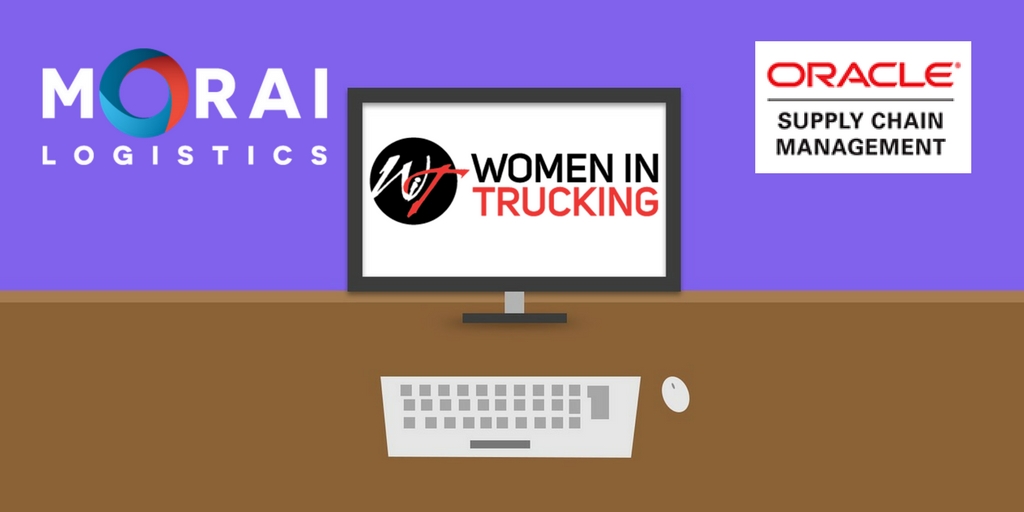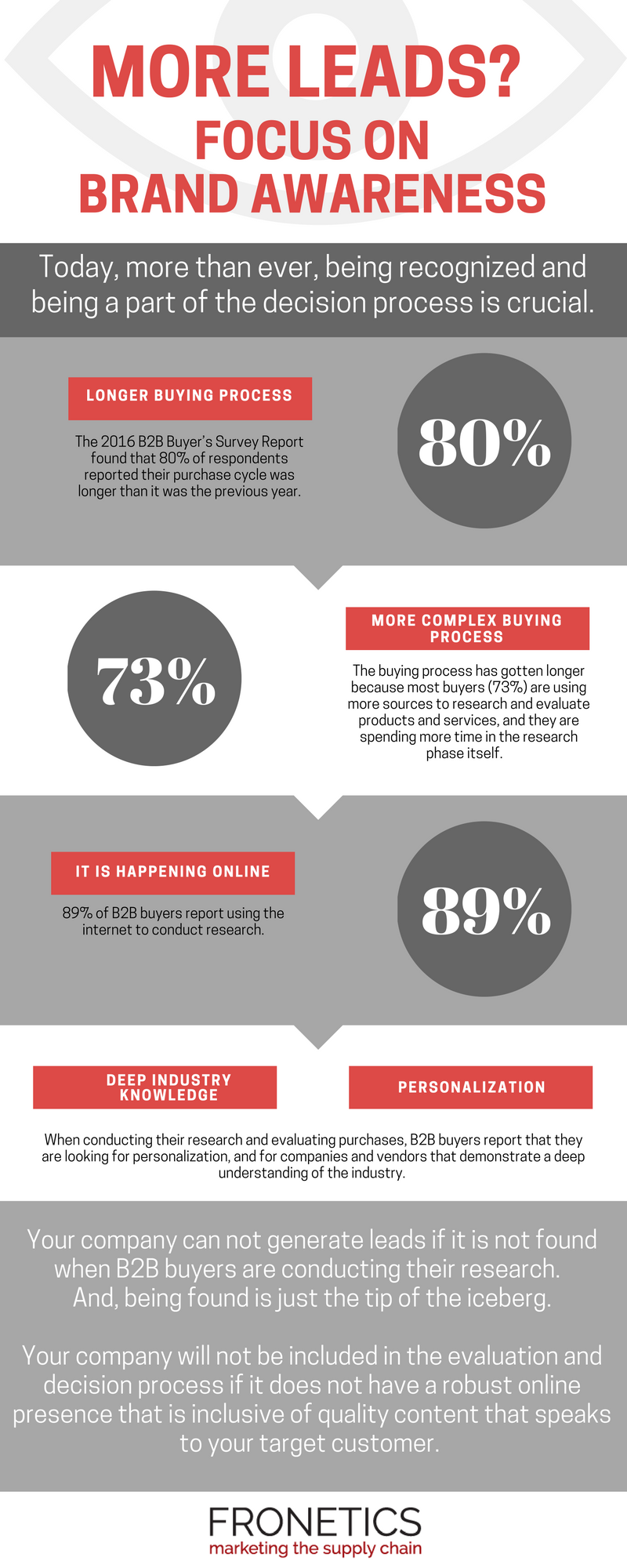
by Fronetics | Feb 6, 2017 | Blog, Content Marketing, Marketing, Social Media, Supply Chain
Instagram Stories offer an on-trend platform for delivering targeted content to B2B buyers and building brand awareness with potential customers.
If you haven’t considered using Instagram as part of your social media marketing program, it might be time to change your mind.
As of December 2016, Instagram had over 600 million monthly active users, about half of whom are between the ages of 18 and 29. Why should supply chain and other B2B marketers pay attention to the social networking preferences and behaviors of millennials? Because 73% of millennial workers are involved in decisions to purchase products or services for their companies. Welcome to the new generation of B2B buyers.
What’s more, Instagram’s recently launched feature, Instagram Stories, offers marketers a new platform for content delivery that is wildly popular with this generation. But unlike other networks with short-term video-sharing opportunities (ahem, Snapchat), Stories can have a polished, professional feel that well suits B2B brands.
What are Instagram Stories?
Instagram Stories are sequences of content that a user posts to his/her Instagram account over a 24-hour period. Besides photos, Stories can include videos, live and prerecorded, as well as Boomerangs, seconds-long motion clips that play forwards and backwards. The content plays as a continuous feed, creating a narrative about the user’s day — hence the term “Stories.”
Users may also customize their Stories with various design tools. Swipe to explore different filters, or add customizable stickers with time, weather, location, or even holiday greetings. You can also use a drawing tool to create your own masterpiece on your photos or videos.
Audiences can view the Stories of the users they follow within the 24-hour window after they are posted. They can find users with active Stories by scrolling the user icons at the top of the app. Or users can tell their followers that they’ve posted a story by tagging them, which notifies them through a direct message.
How you can supply chain and B2B marketers use Stories?
Instagram Stories aren’t just for friends showing friends what they’ve been up to. They’re a creative content-delivery platform that helps build rapport with followers, grow brand awareness, and educate potential buyers.
Here are 5 ways marketers might use Instagram Stories to engage their target audiences.
1. Deliver special offers and limited sales
Take advantage of this channel of communication to give special offers to followers tuning into your Stories. The time sensitivity of the 24-hour period will urge your buyers to engage with your Story and act quickly before the offer expires.
Direct followers to a special landing page or include a code right in the Story. As Social Media Examiner puts it, “The scarcity of Instagram Stories gives them power.”
JCrew’s promotion of the new Jane in Pink sunglasses offers an example of the clever use of Instagram Stories. The brand posted a combination of GIFs and photos teasing the pink sunglasses before announcing that there were a mere 50 pairs available for purchase through a link in its bio. This caused half of the merchandise to sell out in two hours.
2. Sign in for a takeover
Arrange to take over the Instagram account of a partner company or customer. It’s a fun way to draw attention from an existing, built-in audience. And it provides a mutually beneficial exchange of value for both parties.
As explained by media executive Gary Vaynerchuk, account takeovers offer a “backdoor approach to accessing new demographics.” The strategy is about “deepening relationships, gaining exposure, hacking distribution, and raising awareness.”
What’s more, account takeovers don’t require partners to hand over sensitive login information. Simply send your content to your partner to upload. It’s win-win situation that allows both parties to reach a new audience and share new content with ease.
3. Go behind the scenes
This is a great way to humanize your company and let you customers see and experience your brand personality. Capture candid photos of meetings. Take your followers on an adventure or an offsite task. Have a new product? Share a picture of the early designs or the production process. It’s a way to get followers excited and intrigued as to what happens behind the doors of your company.
Happy Socks, a Swedish sock and underwear retailer and manufacturer, does this well. It features videos of what’s going on in the office, birthday celebrations, and other candid moments.
4. Q&As
Get really personal with your customers by answering their questions via 10-second videos. One of Instagram’s community managers, Jeffrey Gerson, did this and found it to be a great success. This allows your viewers to feel as though they are really being heard since they are watching you talk about their questions as opposed to just reading typed answers online. It’s also a great opportunity to showcase the personalities of your employees and social media team while directly interacting with your audience.
4. At a loss? Ask your followers!
Give the people what they want — They may have some great ideas that you’d never considered. Survey your followers by posting a graphic of some options while leaving it open-ended as well. Have them respond in direct messages or comments with what they want to see from your social media. For example, Red Bull had their audience send the thumbs-up emoji in direct messages through Instagram Chat for the Story topic they most wanted to see published.
These five options provide your team with a starting point to begin exploring Instagram Stories. It’s an exciting tool to add some creativity and have some fun with your social media strategy.
Related posts:


by Fronetics | Jan 30, 2017 | Blog, Content Marketing, Logistics, Marketing, Supply Chain, Transportation & Trucking
Our readers voted Morai Logistics, Women in Trucking, and the Oracle Supply Chain Management Blog as the top 3 logistics and supply chain blogs of 2017.
Every year we ask our readers to vote for the best industry blogs. The results are always interesting — there’s really a lot of great supply chain and logistics content out there, plus it’s great to see where our readers are finding value.
This year was no different. The best logistics and supply chain blogs, as named by our readers, are all new to our best blogs list. They probably couldn’t be more different, either. But all three offer consistent, high-quality content, which is key to running a successful blog.
Here are the top 3 logistics and supply chain blogs of 2017.
1) Morai Logistics
Morai Logistics Inc. is a Toronto-based third-party logistics provider representing Mode Transportation. Morai’s blog covers the most pressing issues facing the logistics industry, as well as trends to watch out for, professional tips, and career advice. The almost-weekly posts have a lot to offer, in terms of information and thought leadership, and they often include valuable (and, might we add, beautiful) visual elements like infographics.
P.S. Check out our interview with Morai Logistics’ President Kelli Saunders.
2) Women in Trucking
The Women In Trucking Association is a non-profit organization focused on encouraging the employment of women in the trucking industry, promoting their accomplishments, and minimizing obstacles. Just one vote shy of the top spot, the Women in Trucking blog — or, should we say blogs — bring to light many issues of concern to both women and men working in the trucking industry. President/CEO Ellen Voie’s blog offers thought-provoking, insight on topics from the driver shortage to recruiting women drivers. The driver’s blog — with content mostly from longtime driver and writer Sandy Long — tackles pressing day-to-day issues facing drivers, such as parking in dangerous locations, family problems stemming from job-related realities, and assimilating to trucking culture.
3) Oracle Supply Chain Management
The Oracle Supply Chain Management blog looks at how Oracle helps organizations transform their supply chains into more holistic and integrated value chains that cover the three key operational pillars: Demand, Supply, and Product. Weekly content from a number of contributors cover topics including supply chain management, events, product lifecycle management, logistics, technology, and more.
Honorable mention
These blogs received quite a few votes as well.
What blogs do you read on a regular basis? Which have the most valuable content?
Related posts:
![The State of Supply Chains: The Supply Chain Has Gone Digital [Infographic]](https://fronetics.com/wp-content/uploads/2024/10/virtual-reality.jpg)
by Jennifer Hart Yim | Jan 23, 2017 | Big Data, Blog, Data/Analytics, Logistics, Strategy, Supply Chain
2016 was the year of the digital supply chain — here’s a look at how things changed.
This guest post comes to us from Adam Robinson, director of marketing for Cerasis, a top freight logistics company and truckload freight broker.
2016 marched onward with a drive to improve the use of digital technology throughout the supply chain. In our first supply chain trends post, we surmised the previous year’s trends would continue. However, this prediction proved to only touch on how important the digital supply chain would become.
Within four months, the digital transformation had already reached most supply chain organizations. Per GT Nexus, 75% of executives surveyed recognized the digital supply chain as an important factor for the next five years. Meanwhile, 70% have also started processes to implement digital supply chain technologies throughout their companies.
Unfortunately, many supply chain entities continue to hope for a better tomorrow. In other words, the digital supply chain transformation has only been rated as very satisfying for 5% of respondents. In addition, just less than half (48%) of respondents report continued use of traditional technologies exclusively, which include the following:
- Fax machines
- Manual order entry and review
- Land-line phones, not voice over internet protocol (VoIP), which reduces overall costs and downtime
- Email, although beneficial, is susceptible to internet connectivity issues, security breaches and other problems
- Chaotic picking protocols
This infographic, created by GT Nexus, also shows other ways the digital supply chain evolved in 2016.

(Made with Canva)
Essentially, the digital supply chain is essential to gaining and maintaining competitive advantage. Digital technologies, reports Richard Howells of Forbes, including Big Data, analytics, the Internet of Things, social media, and point-of-sale reporting, enable business to know more about consumer needs and wants than ever before. Consequently, they can more accurately respond to changes in product demand across large distances and within infinitesimally small time frames.
Supply chain execs retained fundamentals throughout change.
Innovation is the driving force behind change and improvement in the modern world. Supply chains must evolve to meet an increasing number of omnichannel sales, and technologies must be integrated within existing systems to reach maximum efficiency and productive value.
As explained by Grant Marshbank of VSC Solutions, “The rate of change is not going to slow down. Technology will only delivery […] if it’s implemented with strategy and operations that adhere to best practices.”
Marshbank’s words highlighted the need to focus on fundamental concepts while responding to changes and improvements in the supply chain. For example, an optimized supply chain is good, but it opens more opportunities for errors. Simply putting all an organization’s proverbial eggs into one basket may be risky if appropriate auditing and review measures are not undertaken to ensure continued compliance and accuracy in all orders.
Change is a necessity for businesses, including the supply chain, to grow and expand. Yet many destructive forces can severely undermine a company’s progress. Bad weather, poor hiring practices or inefficient maintenance of consumers’ financial data can decimate a company. However, the response to hindrances in 2016 continued to showcase the importance of fundamental concepts, asserts Ryder, which include the following:
- Continually seeking the fastest, most cost-effective means of transporting products to consumers, including enhanced delivery optins.
- Expansion of global footprint while adhering to local, state, federal and international requirements
- Keeping companies accountable and focused on giving back to their domestic partners through reshoring or nearshoring
- Working with more outside agencies, also highlighted by Samantha Carr of Business 2 Community, including crowd-sourced logistics, warehouse optimization and outsourcing, and greater use of cloud-computing
Augmented reality found its place among consumers.
Augmented reality sounded amazing and far-fetched early in 2016, but the year has shown it to be one of the most successful product in existence. There tends to be more acceptance of technologies in the workplace once consumers can identify how they work.
For example, new hires are likely to pick up tablet-based systems more easily since they have been using them recreationally for some time. Essentially, the virtual-reality (VR), which is the precursor to augmented reality, hype of the 2016 Christmas shopping season is making more people excited about this new way to “see the world.”
While the VR hype may seem like it only emerged for Christmas, think about one of the hottest games of 2016, Pokémon Go! This app was built on augmented reality, combining the digital and physical worlds into one interactive environment. This technology, reports JOC.com, will be a key to practically eliminate extensive training courses and repair time requirements throughout the supply chain.
Ultimately, it translates into greater use of augmented reality in supply chains, which is growing by 100% annually, reports Barcoding Incorporated.
What’s next?
Clearly, technology dominated the conversation for 2016, but there are also changes in how supply chains operate that require a more in-depth discussion as well. In the next post of this series, we discuss the impact of artificial intelligence, agile processes and procurement expansion on the supply chain of 2016.
Related posts:

by Elizabeth Hines | Jan 18, 2017 | Blog, Logistics, Strategy, Supply Chain, Warehousing & Materials Handling
Having a modern, flexible supply chain is important to finding the way out of inventory dilemmas.
Imagine your irritation when you try to place an order online and are greeted by the message: “We apologize for the inconvenience, but this item is out of stock.”
However, even if the item is in stock, your mood is likely to sour if delivery will take more than a few days — and, even worse, you also have to pay for shipping. If you’re anything like me, you will quickly find an equivalent product that’s available immediately and ready to be shipped that same day.
It’s in the light of this hyper-competitive environment that the current inventory crisis should be seen. To sum it up from the perspective of warehouse owners: these are good times. Warehouse rents are hitting new highs as vacancy rates sit below five percent in many major cities.
From the viewpoint of retailers, on the other hand, it’s a significant challenge. Excess inventory is building even as consumer demand remains relatively high. Well aware of the consequences of not meeting ever-rising consumer expectations, retailers have felt compelled to stock up to — at all costs — avoid that irritating “out-of-stock” disclaimer. On the other hand, a chock-full warehouse is not necessarily good for business or speedy fulfillment.
Modernity and flexibility are key
This is when the importance of having a modern, flexible supply chain really comes into play:
- How quickly can the supply chain adjust to changes in demand?
- What’s the visibility up and down the supply chain?
- How aware is each link of what others are doing?
- How fast can inventory be refocused?
Some companies like Nordstrom have invested in cloud-based supply chain services. In Nordstrom’s case, the acquisition of a minority stake in DS Co., a supply chain software firm, which links inventory management between retailers and suppliers, was designed to facilitate direct shipments from vendors to customers, thereby circumventing the need for more inventory space. When suppliers and retailers track the inventory of one another, the risk of out-of-stock disappointments is reduced and risk is shifted up the supply chain.
Put to practice, it means that an order placed on the luxury retailer’s website is routed to the manufacturer, which then ships the item directly from its warehouse to the buyer. The Wall Street Journal noted Nordstrom’s investment comes “as retailers are racing to compete with e-commerce companies such as Amazon.com Inc. to provide convenience and speedy delivery to customers while keeping costs down.”
J.C. Penney is also shifting gears to avoid inventory gluts. The new business model essentially turns part of the store into a showroom for one of its suppliers, Ashley Furniture. Instead of keeping inventory in store or in distribution centers, all orders will be shipped straight to the consumer from Ashley Furniture.
Drones are not surprisingly part of solving the inventory dilemma. Walmart, for example, is testing the use of drones to catalog inventory, finishing in one day what it takes employees a whole month to get done. The intent is partly to make the giant retailer’s supply chain more efficient.
Clearly, traditional retailers are exploring new territory to meet consumer demand.
What do you think is key to solving the inventory crisis?
This post originally appeared at EBN Online.
Related posts:

by Fronetics | Jan 16, 2017 | Blog, Content Marketing, Logistics, Marketing, Supply Chain
Keep these four trends in mind when planning out your marketing efforts in 2017.
Marketo recently revealed its predictions for upcoming marketing trends for 2017. It’s a list of technologies, strategies, and tactics that the marketing software automation company believes will be important to focus on over the next year.
We culled through these predictions to highlight what the supply chain industry needs to know. Below are four trends marketers should have on their radars.
4 marketing predictions to watch out for
1. Customer-Centric Marketing
For B2B companies, customer-centric marketing means buyer-centric marketing. Because the cost of switching vendors is increasingly low, and the buyer is faced with endless choices, it’s likely that 2017 will see “an aggressive shift in attention toward increasing customer spend.”
This means increasing your focus on building and cultivating relationships. Marketo suggests that companies balance their marketing spend to “invest in building engagement, brand loyalty, and advocacy with current customers rather than just finding new ones.”
It’s likely that technology will play a big role in this 2017 trend. Your company needs marketing team members who are tech-savvy and who know how to analyze and respond to customers’ digital signals.
Focusing on the customer also means building authentic connections and a move toward “giving as much as you get, if not more.” We’ll see more and more customer advocacy, which means that marketers need to focus on taking relationships beyond the transactional. Marketo recommends “providing them with opportunities to showcase their expertise and be recognized by their peers as leaders and innovators.”
The key takeaway: 2017 is the year of building quality relationships.
2. A New Generation of Marketers
We used to live in a marketing climate where specialization was the key to success — no longer is that the case. Your business needs leaders who are “full-brain marketers,” multi-talented generalists who are comfortable handling challenges from the creative design to demand generation — and beyond.
It’s time to abandon thinking in silos. Marketo recommends that your marketing team be in constant connection with other teams within the company. “B2B marketers can now use technology to ensure their sales team have visibility and participation in programs — versus being isolated from critical activities.”
This kind of structural shift requires openness and humility. Marketers need to be willing to take questions and ask them, and to be open to making changes based on increased intra-business collaboration.
Marketo predicts that 2017 will see the perfect storm hit the marketing world, bringing an intersection between fulfilling customer needs, storytelling, and digital interactions. Your company needs to look at its organization and build deep expertise across these three functions. “Any marketing organization that’s missing one of these three functions is destined for failure,” warns Marketo.
This new generation of marketers means that top-performing B2B companies will be making optimal use of technology and data. You need to be investing in resources and technology to drive data enrichment and data governance activities to set a good foundation for your account-based marketing strategy. This also means working closely with sales to understand their thought process for lead prioritization and acceptance.
Here, the key to success is open communication within your organization.
3. Techniques
Marketo has laid out a new equation for how marketers will incorporate techniques to engage buyers at every stage of the cycle:
Inbound + Broad-based lead generation + Account-based marketing + Paid media personalization + Direct marketing = Successful customer engagement
What does this mean for the supply chain? Your company can use a combination of these strategies to engage prospects. For example, combining account-based marketing (ABM) strategies with broad-based strategies will allow marketers to build long-term customer relationships, while bridging their advertising and marketing technologies to demonstrate ROI.
All this focus on ABM solutions will allow marketers to become more efficient, taking advantage of cutting-edge technologies. Marketo suggests creating a detailed ABM plan for all departments, which includes creative marketing ideas to test, as well as new technologies.
It’s time to harness the technology at your fingertips.
4. Content & Channels
2017 is likely to usher in a return to value over volume, both in content assets and in content distribution channels. It’s time to stop creating content for the sake of creating content and to shift toward “deeply listening to and understanding the customer.” This will allow you to cull some of the content and channels that aren’t benefitting your business.
It’s easier than you might think to put this trend into practice. Marketo suggests starting by “deeply understanding the content you already have, and taking the time to evaluate what resonates and what doesn’t.” Next, you can create a plan to keep your content strategy going forward in a meaningful way.
As far as channels go, user experience, particularly for mobile, is going to be increasingly important. You can prepare for this by adding structured data to your site, and by providing valuable content. It’s important to keep a watch on the changing user behavior and expectations, as it will be the biggest driver of change in SEO.
As algorithms continually change, and chronological timeline updates increasingly being phased out, social media channels will put more focus on individuals over brands — this means an absence in brands showing up in feeds organically. You can rise to this challenge by making real-time engagement a priority.
We’ll also see ad inventory becoming tighter and more expensive across social platforms. This means you’ll need to become more specific about the audiences you target, and make your offers increasingly personalized and relevant. Marketo adds the hopeful prediction that “advertisers will benefit from more ways to track offline conversions and non-immediate revenue.”
As email technology advances, email campaigns will begin to predict the content you want and really need. The end result here is “targeted, personalized communications optimized for each person, based on their online and email behaviors.”
The takeaway for content in 2017 is: quality over quantity.
Related posts:

by Fronetics | Jan 9, 2017 | Blog, Content Marketing, Marketing, Social Media, Strategy, Supply Chain
Why brand awareness is important to growing your business
The singular goal of most companies that contact Fronetics is to generate more leads — today. This is not surprising in that leads are necessary to generate sales, and sales are necessary to revenue generation and to growth. What is surprising is the number of companies who do not recognize the critical role brand awareness plays in lead generation.
Brand awareness is the likelihood that your company’s brand, products, and services are recognized by consumers. Simply put, if consumers don’t know your company exists and/or don’t know what your company does or what your company offers, your company won’t be a part of their decision process.
Today, more than ever, being recognized and being a part of the decision process is crucial.
The new B2B buying process
The buying process for B2B buyers has become more complex and longer. The 2016 B2B Buyer’s Survey Report found that 80% of respondents reported their purchase cycle was longer than it was the previous year. The buying process has gotten longer because most buyers (73%) are using more sources to research and evaluate products and services, and they are spending more time in the research phase itself.
When conducting their research and evaluating purchases, B2B buyers report that they are looking for personalization, and for companies and vendors that demonstrate a deep understanding of the industry.
The place they are turning to conduct their research, and to evaluate purchases, is online: 89% of B2B buyers report using the internet to conduct research. Specifically, they are going online to: conduct web searches, look at vendor websites, read reviews, use social media, and participate in online forums.
The importance of investing in brand awareness
Your company can not generate leads if your company is not found when B2B buyers are conducting their research. And, being found is just the tip of the iceberg. Your company will not be included in the evaluation and decision process if it does not have a robust online presence that is inclusive of quality content that speaks to your target customer — that is, content that educates, informs, and identifies how your company can meet the needs of your target customers. It is about positioning your company as a knowledge leader, building trust, and establishing relationships. It is about brand awareness.
Building brand awareness takes time and dedication. Companies that are willing to invest their time and resources to brand awareness are rewarded – not just with leads, but with quality leads.
Too often, I see companies who are unwilling to invest either the time or money in brand awareness. One of the most frustrating things to see is a company that gives up too soon. These are companies who have realized significant gains — they have, for example, increased traffic to the website through organic, referral, direct, and social sources; decreased bounce rates; increased social reach; and increased social engagement. But, because their lead generation has not immediately sky rocketed, they decide to either reduce or eliminate their digital and content marketing activities. It is frustrating because these companies have built a strong foundation, and they are on the tipping point of success.
With the B2B buying process taking longer than ever, with buyers spending more time researching and evaluating their decisions, and with B2B buyers turning to the internet and critically evaluating companies on how they present themselves, investing the time and resources to brand awareness is critical.
As Geoffrey Chaucer said, “Patience is a conquering virtue.”

You may also like:




![The State of Supply Chains: The Supply Chain Has Gone Digital [Infographic]](https://fronetics.com/wp-content/uploads/2024/10/virtual-reality.jpg)




